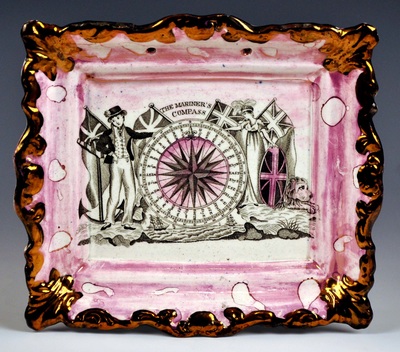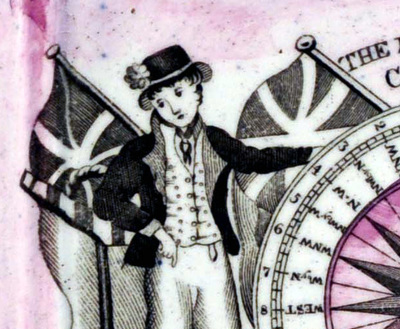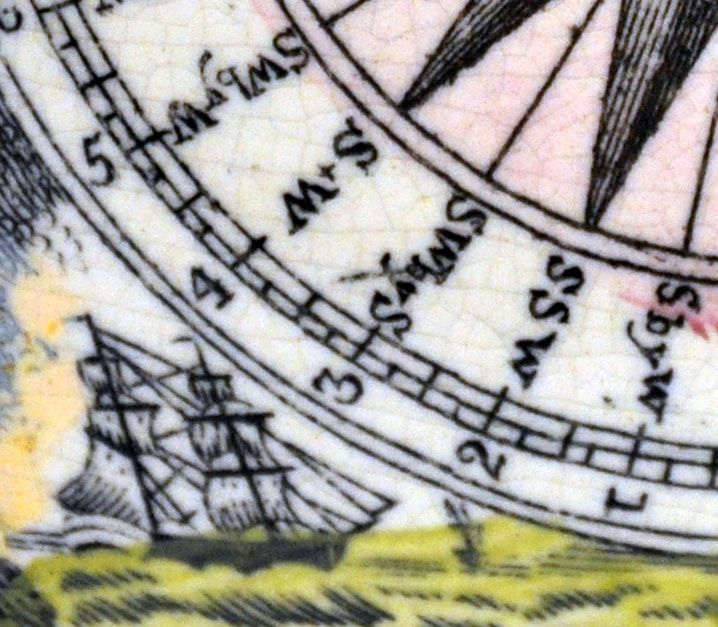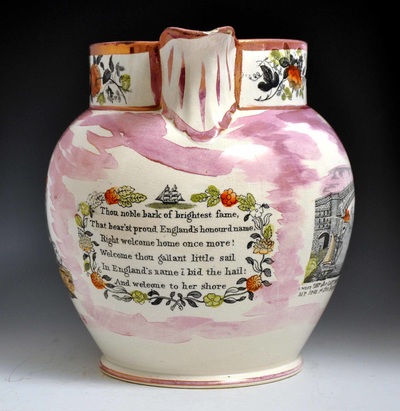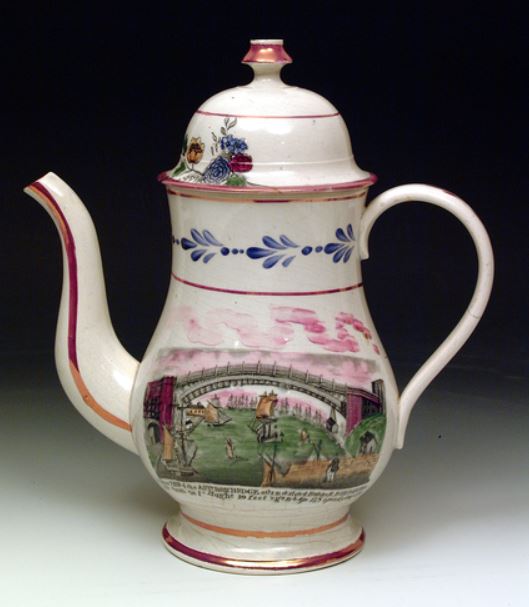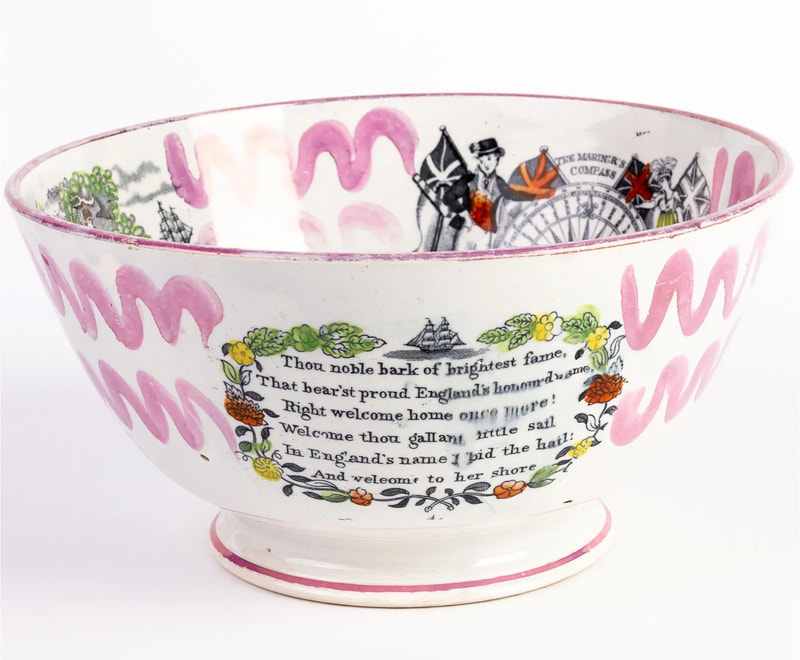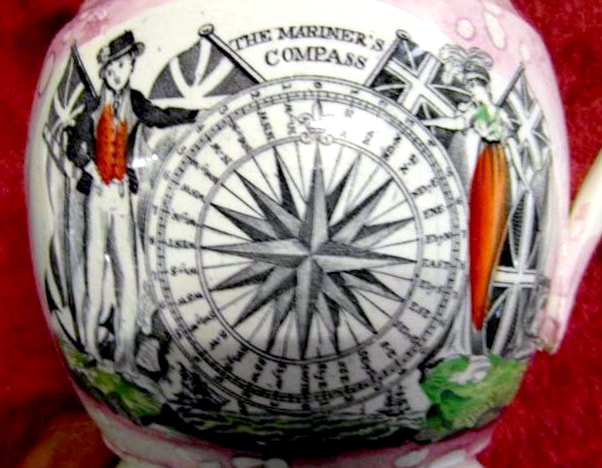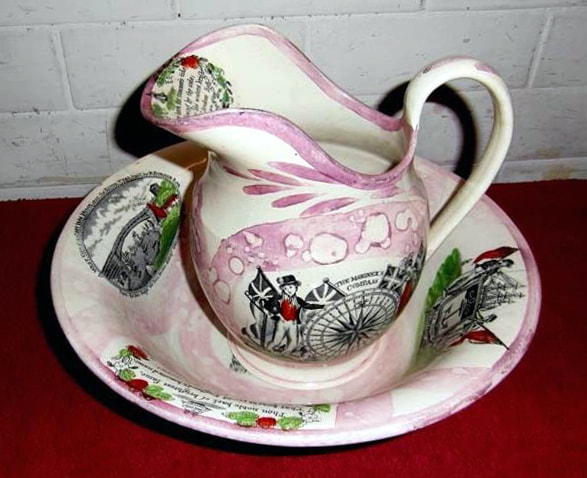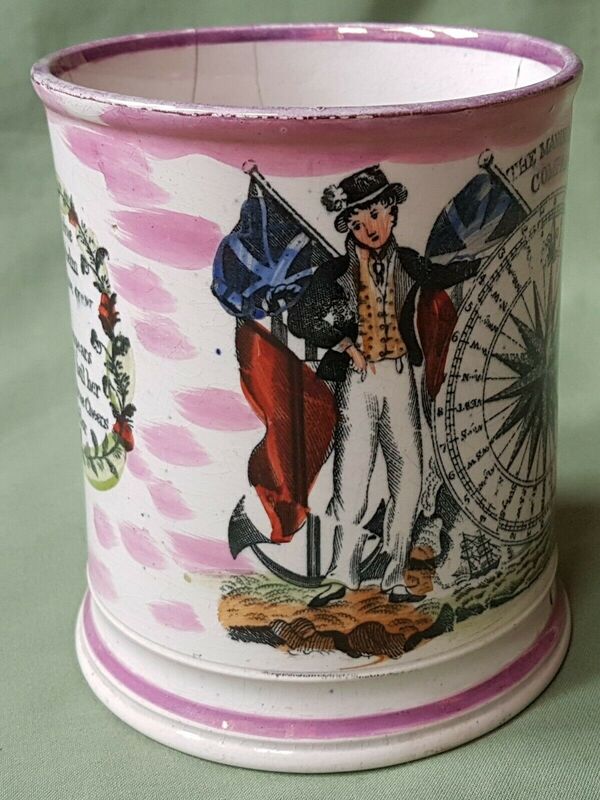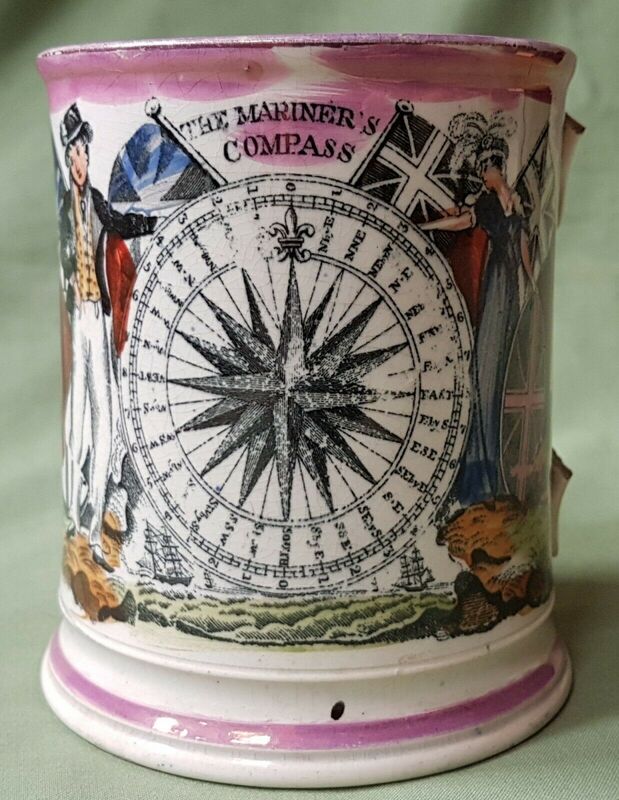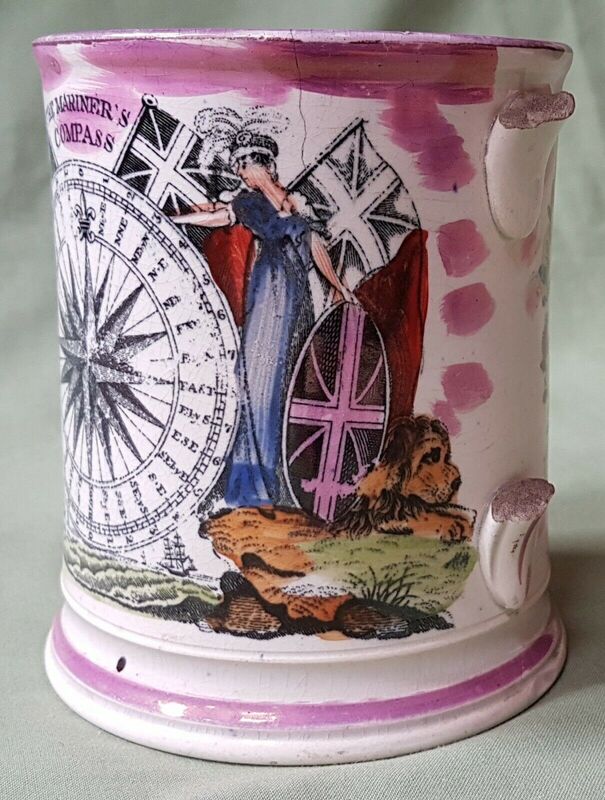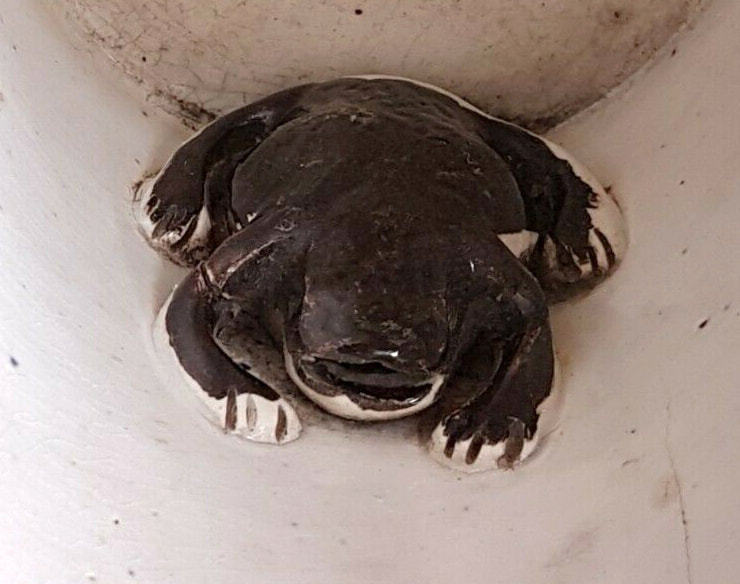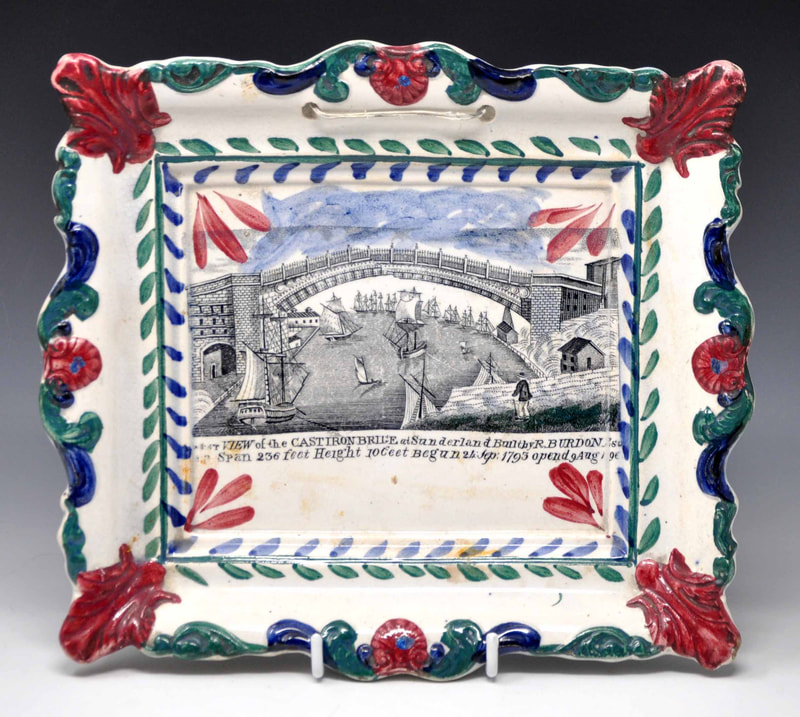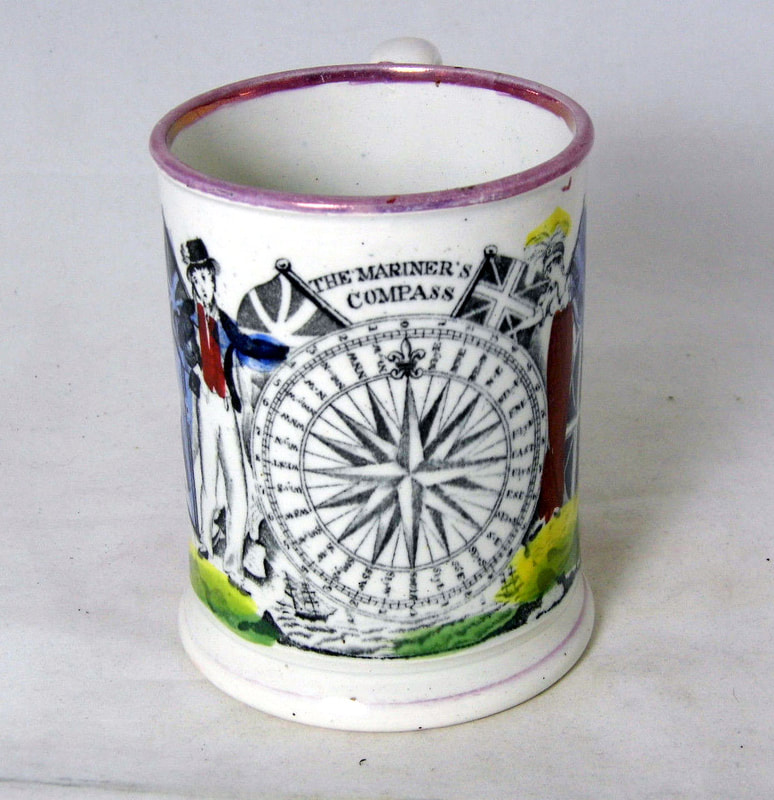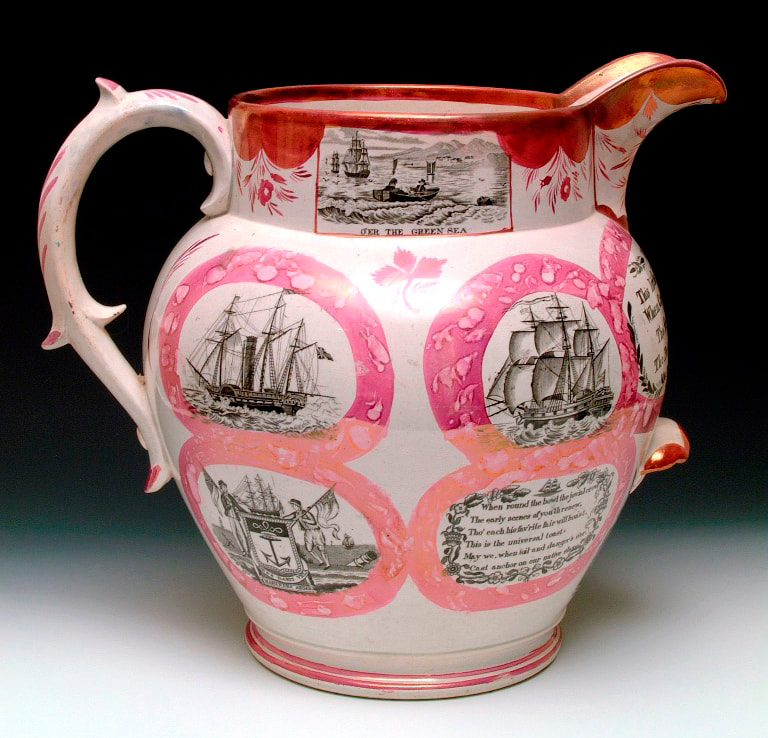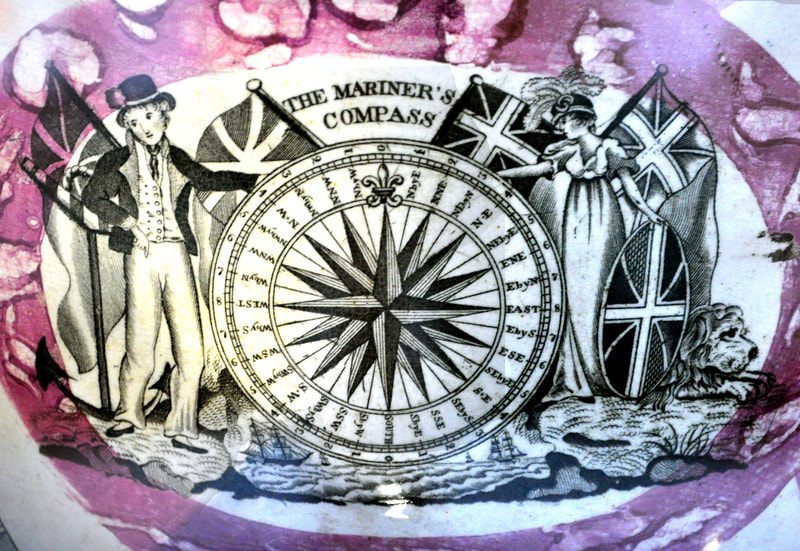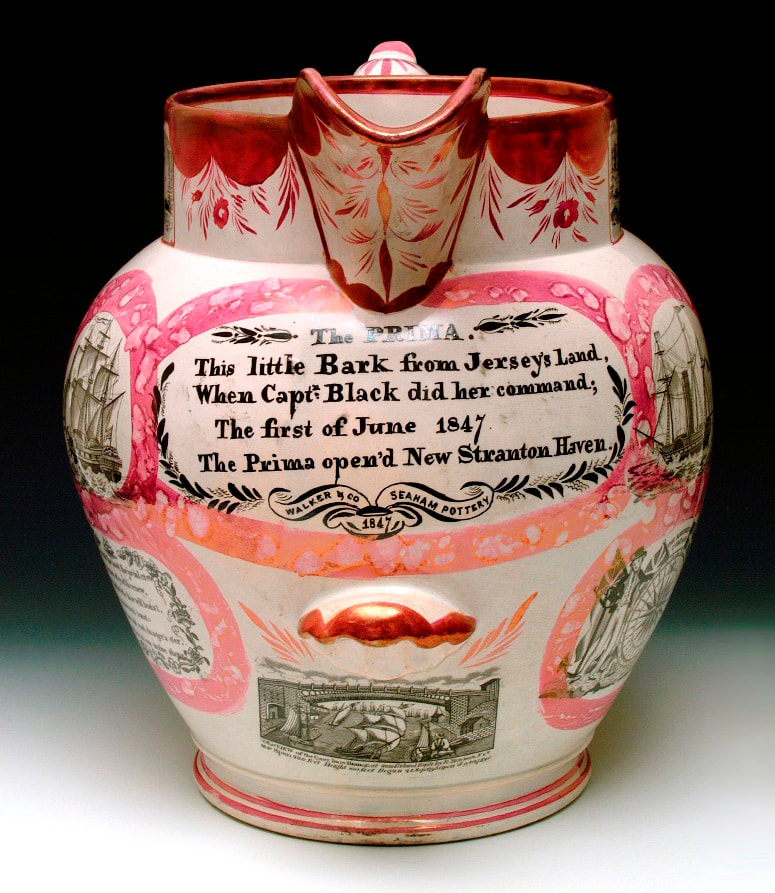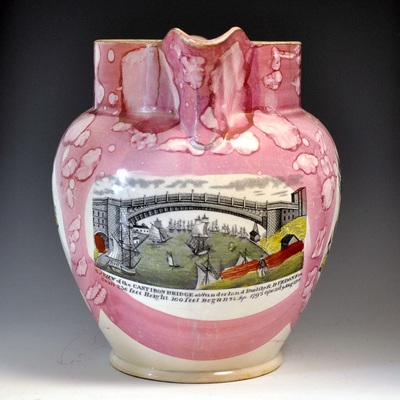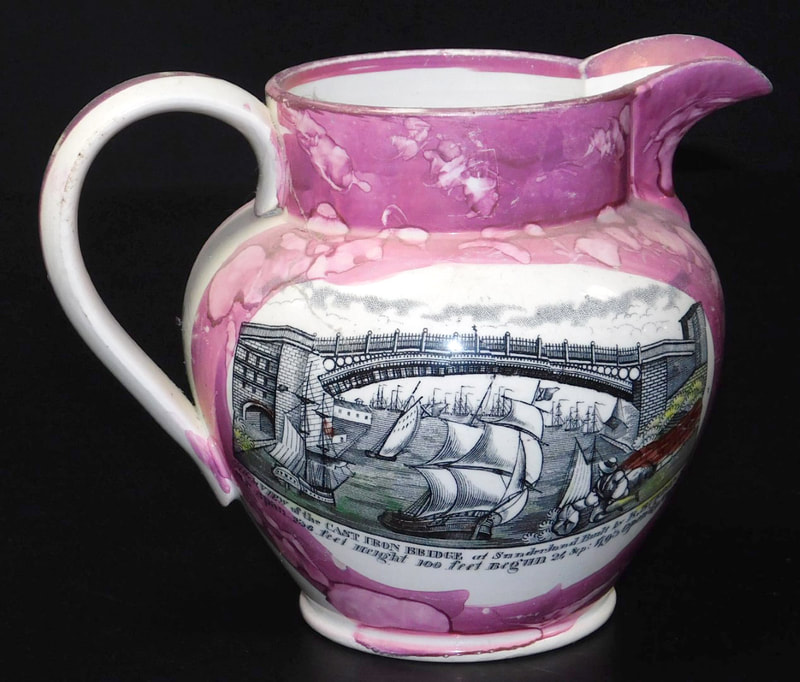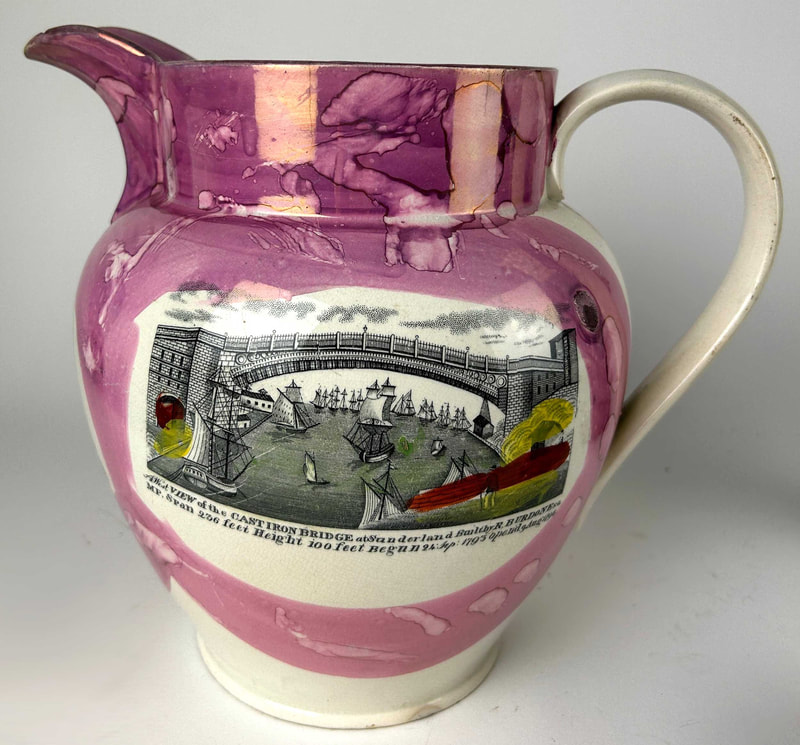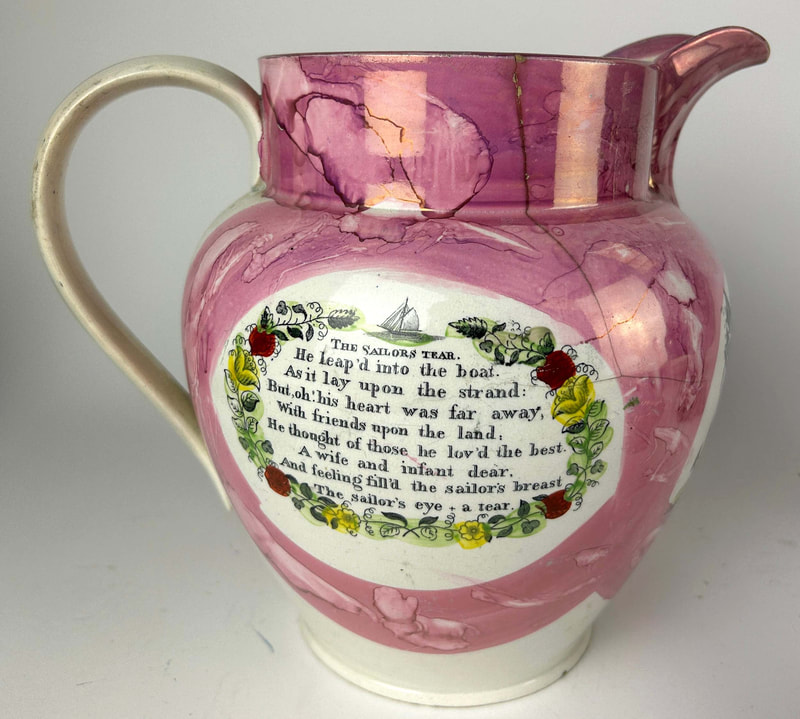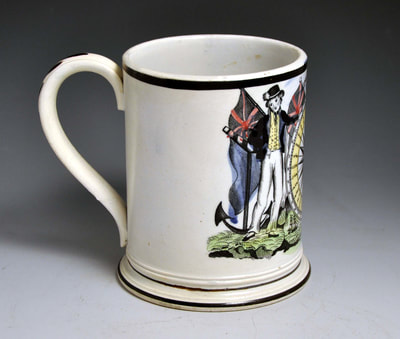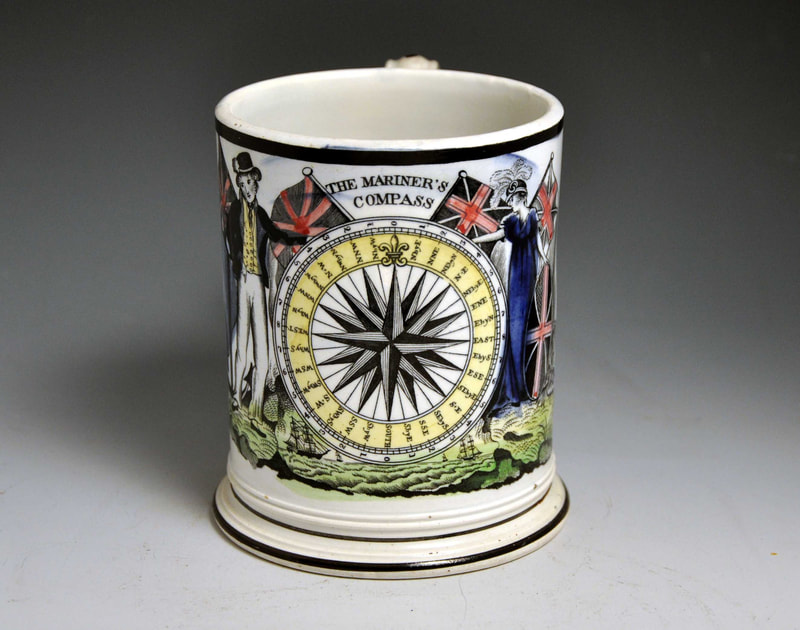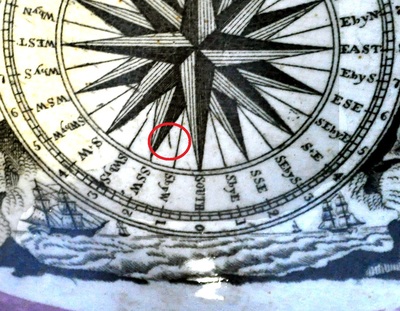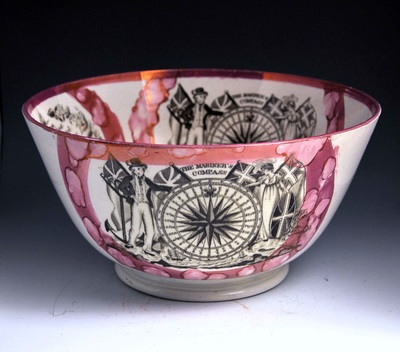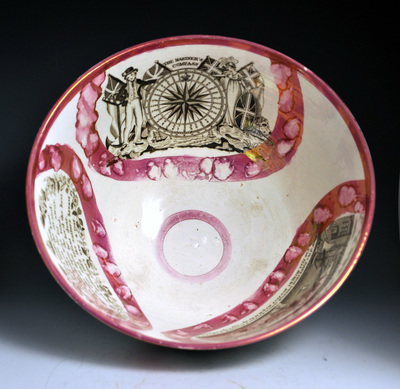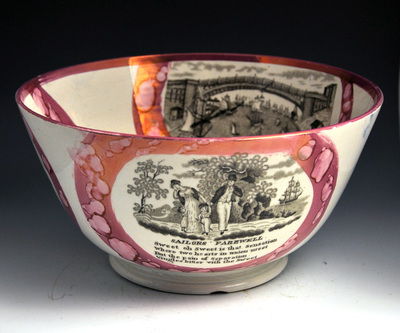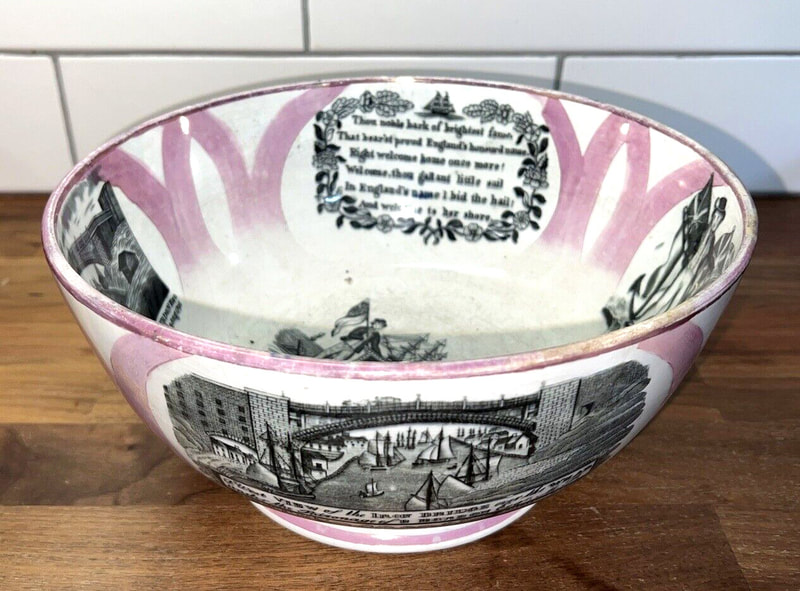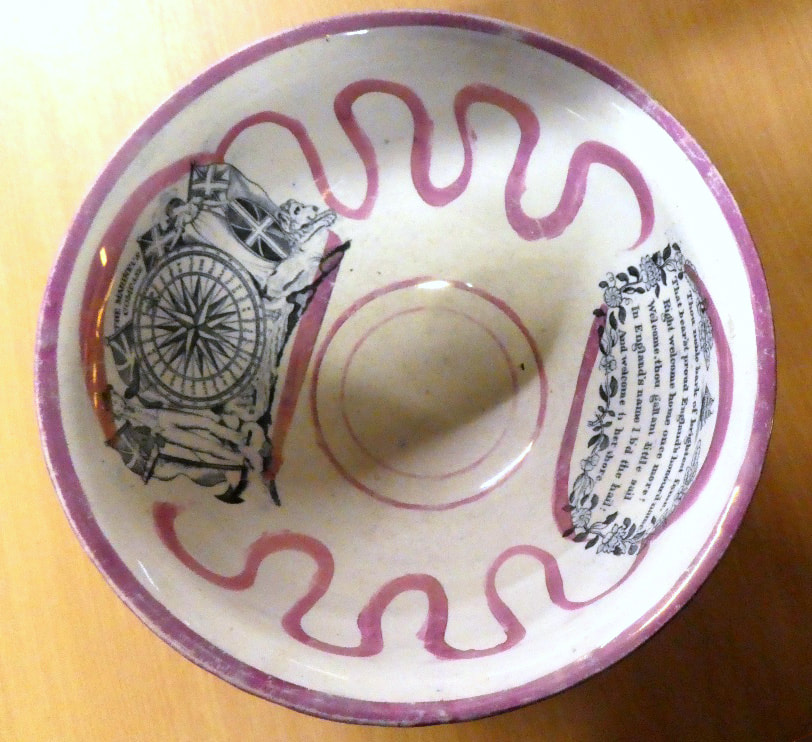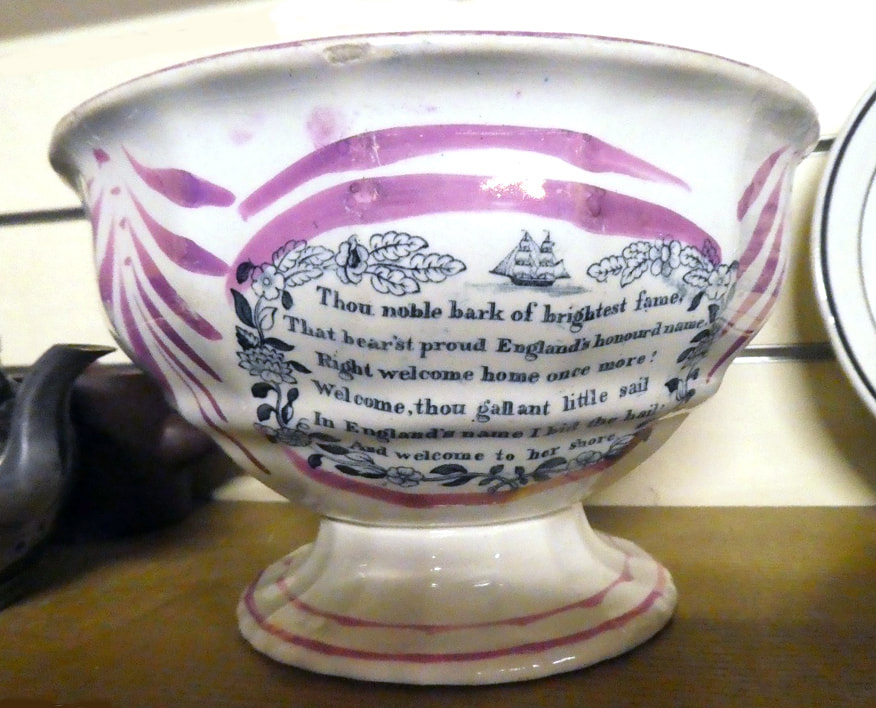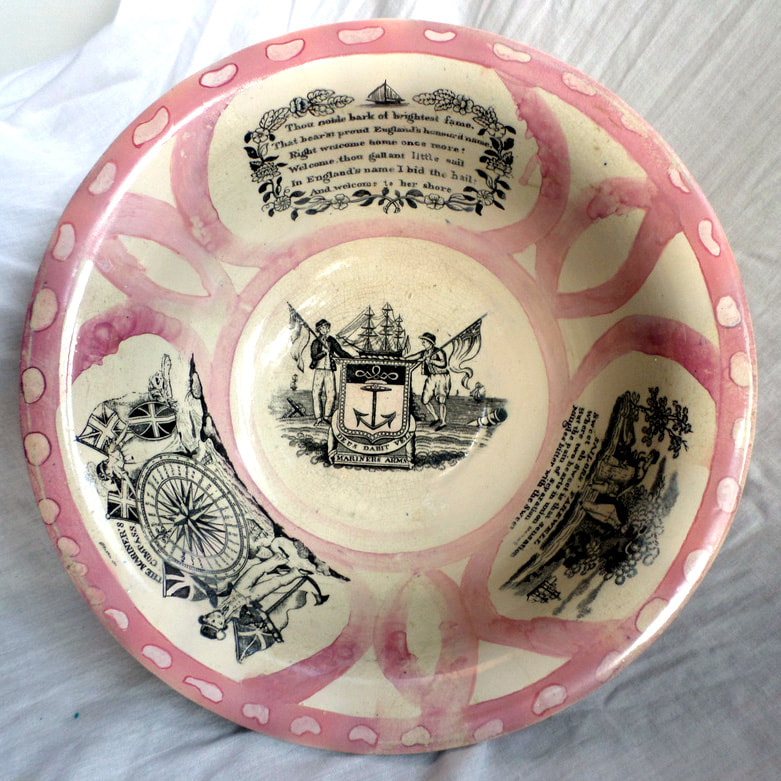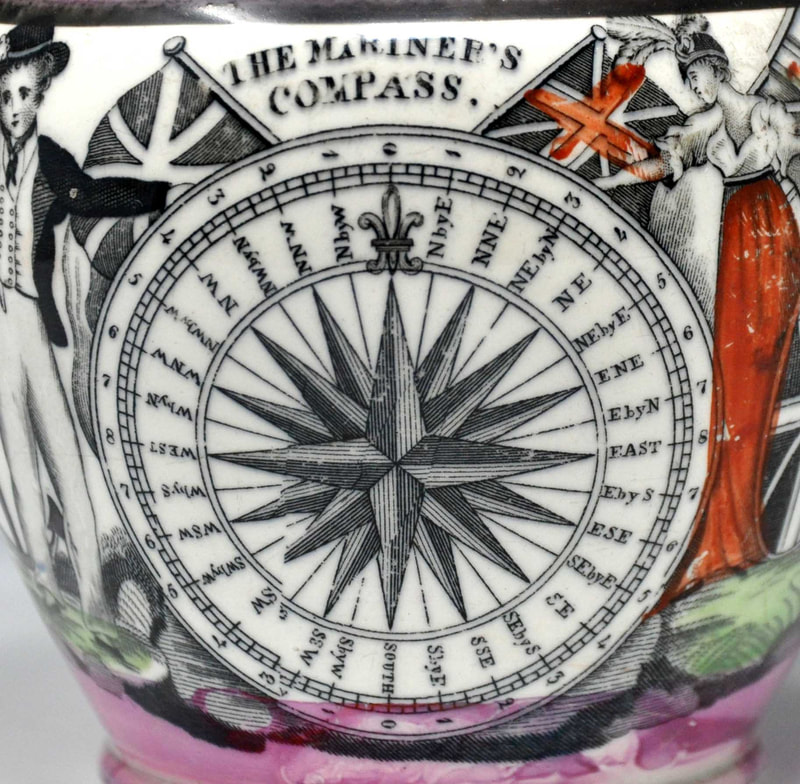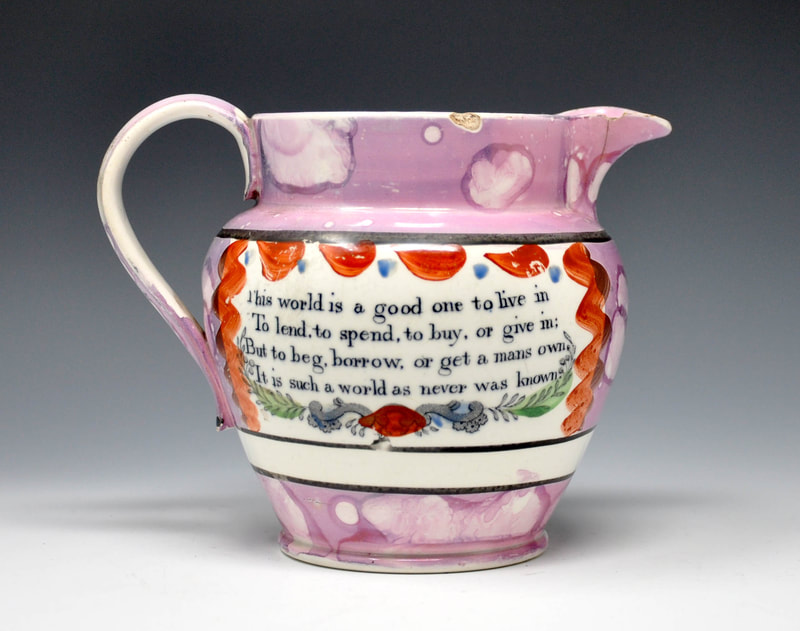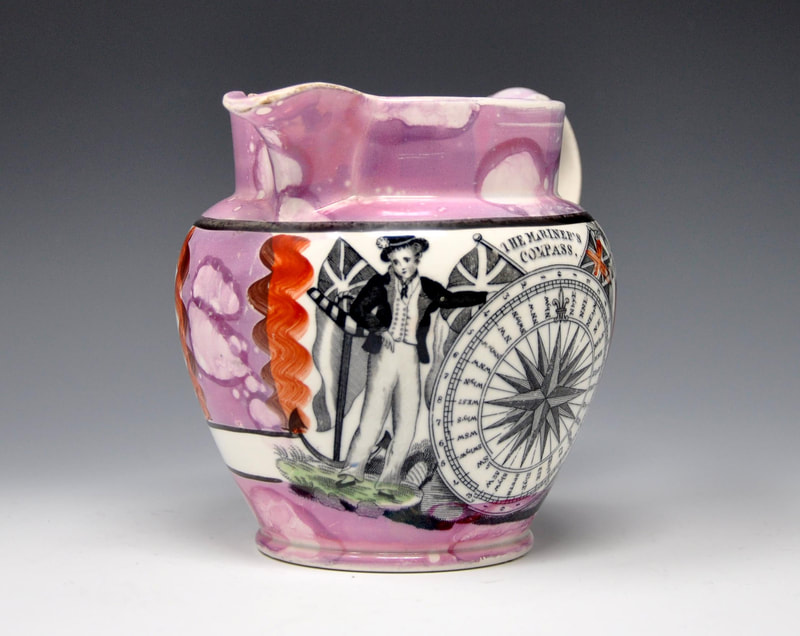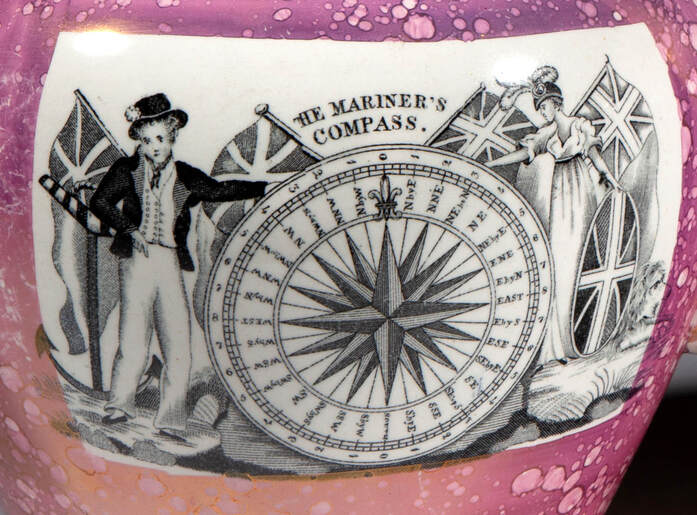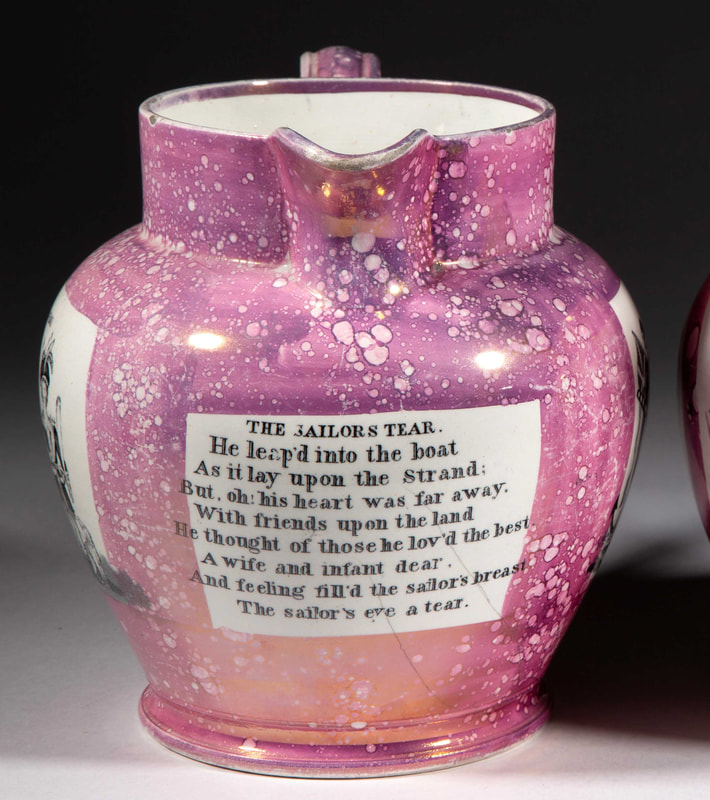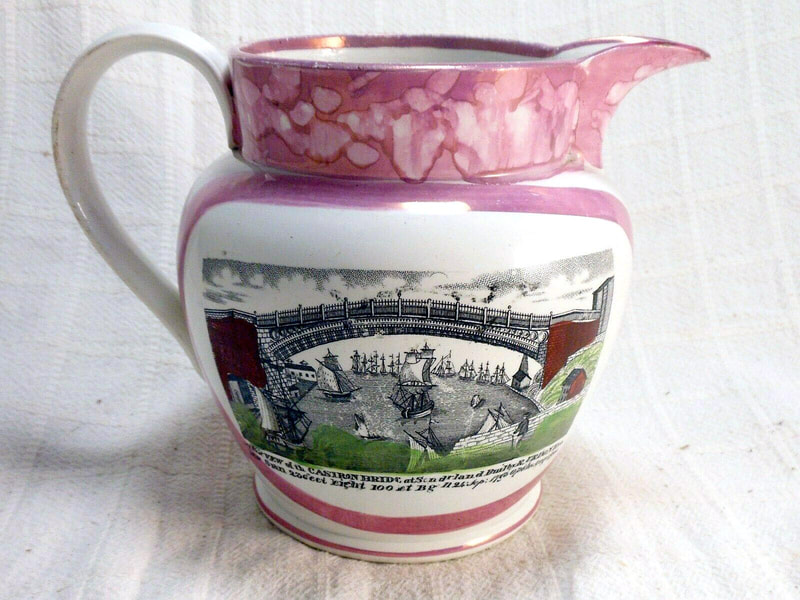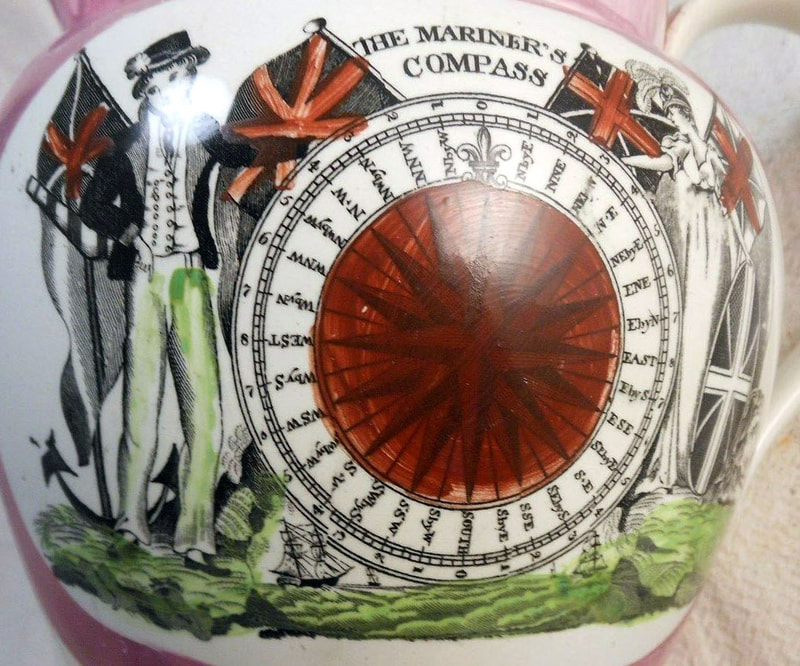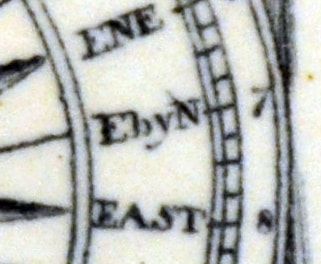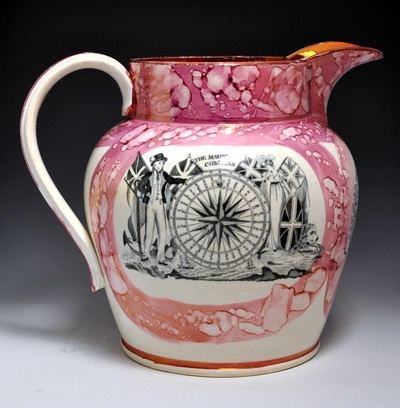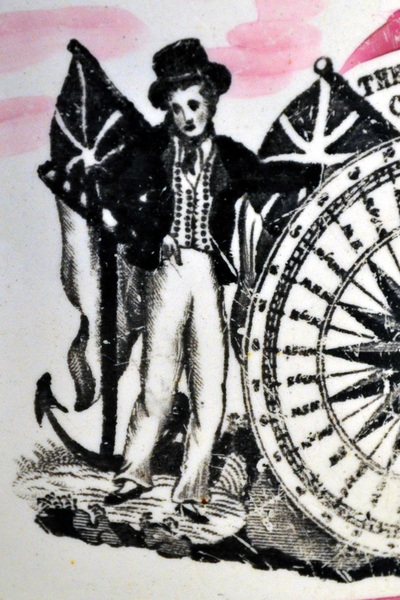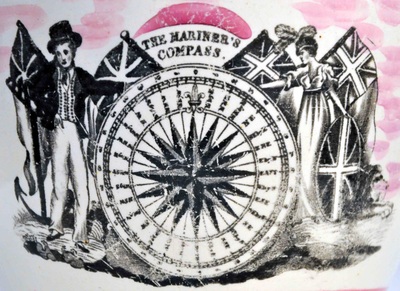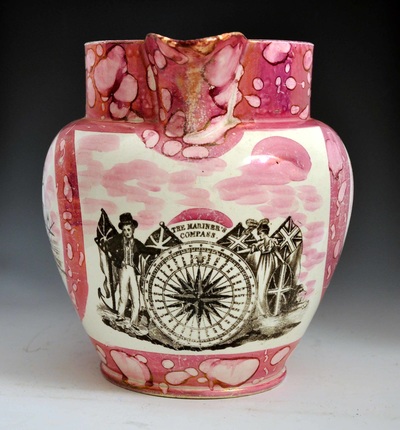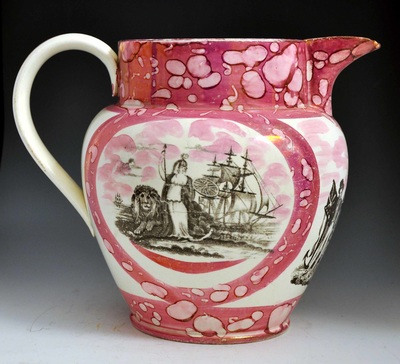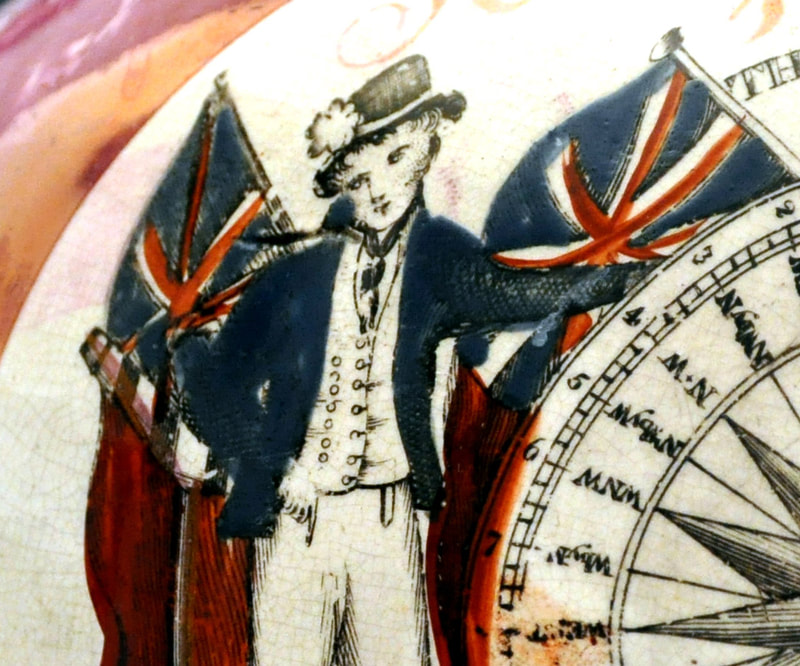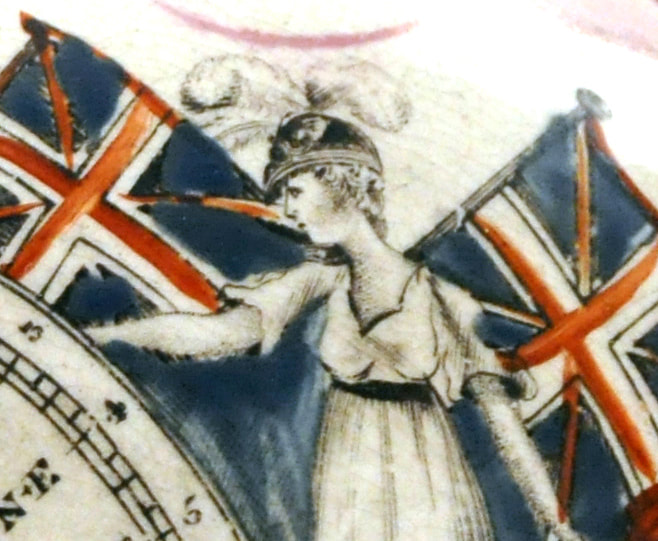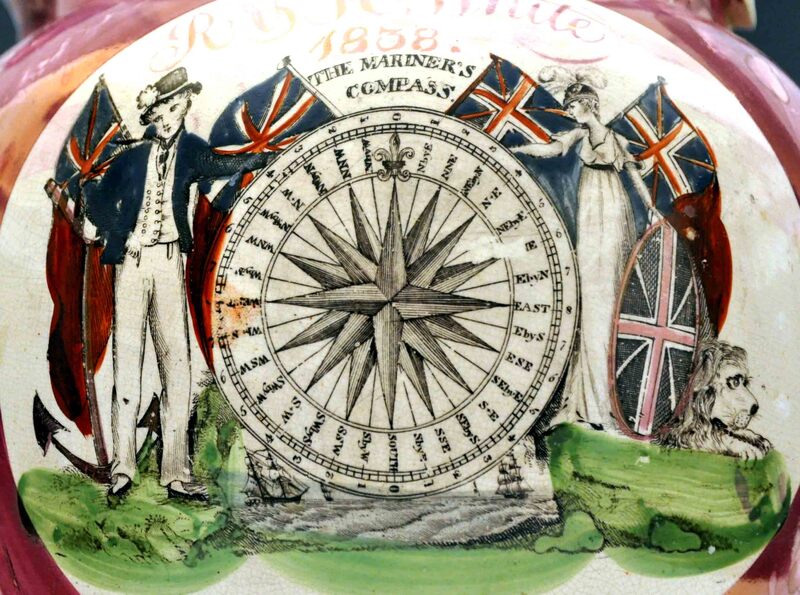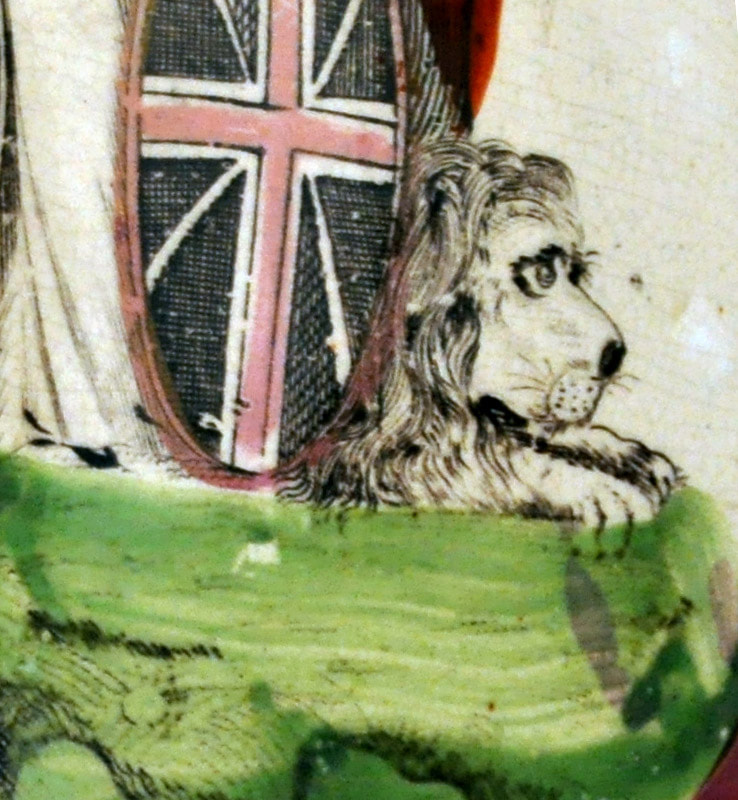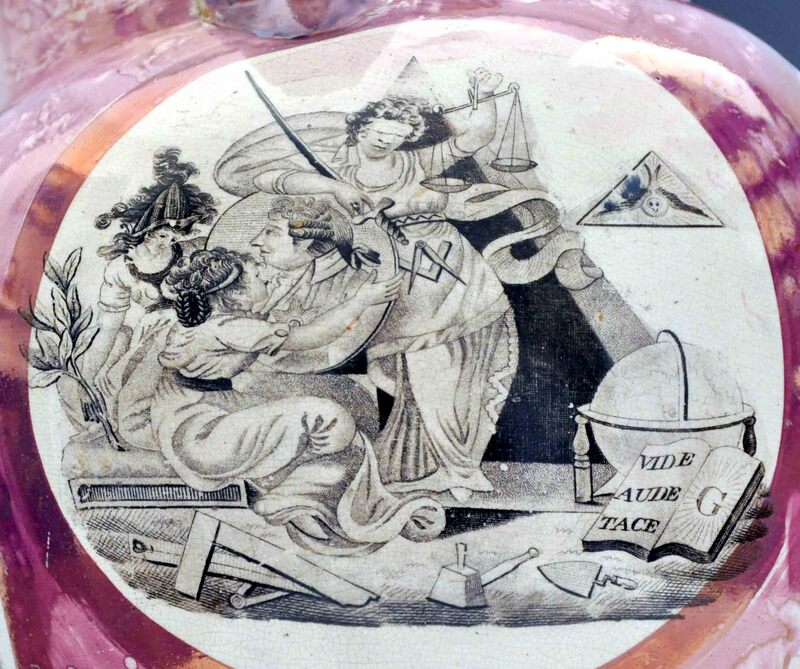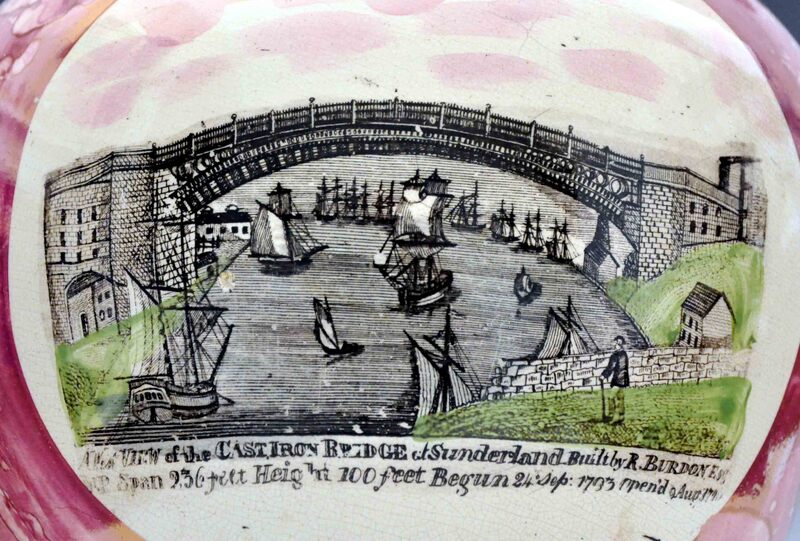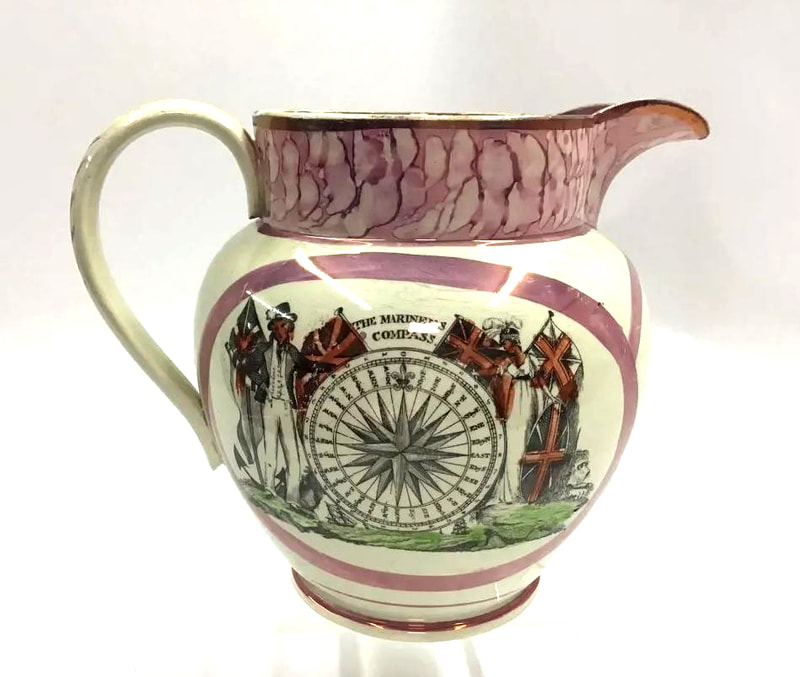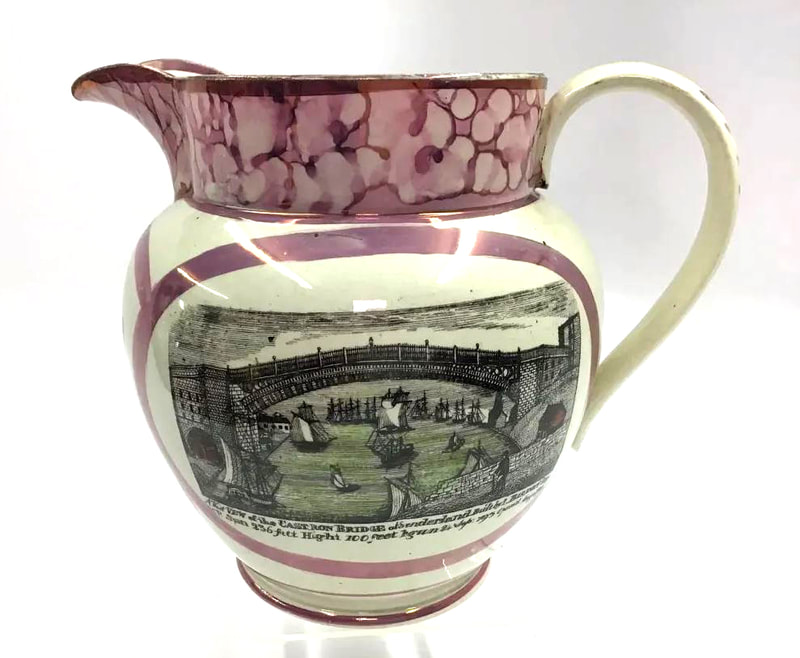Mariner's Compass – Sunderland
Attributed to Newbottle Pottery
The Newbottle attribution for this transfer is convoluted, and relates to pottery items donated by descendants of the owners to the Victoria and Albert Museum. Read more here.
Distinguishing characteristics are: the male figure has three rows of buttons on his waistcoat (compare with the Seaham transfer which has two rows; the fur on the lion's cheek is shaded diagonally. There's also a horizontal scratch on the copper plate running over SW by S. See details below from plaque (left) and first jug below (right).
I don't have a high resolution image of the coffee pot below, from the Sunderland Museum & Winter Gardens, Tyne & Wear Archives & Museums collection, but it appears to come from the same transfer plate.
A large bowl with wavy lustre decoration and the same bridge 29 transfer as the items above.
A ewer and wash bowl with the transfer and similar red enamels to the jug and bowl above.
The brightly enamelled plaques below are attributed to Newbottle. Compare the lime green and red decoration of the left plaque with the wash ewer above.
Finally, a frog mug with similar enamels to the plaques above, and horizontal dabs of lustre similar to the jugs and coffee pot above.
Until the discovery of the first plaque below, which is signed by a Newbottle potter (read more here), I had thought these large plaques were made exclusively by Moore's. It now appears that this transfer plate remained in use at Newbottle High Pottery into the 1860s.
Moore's Pottery or Newbottle?
However, the items below both have zig-zag lustre decoration associated with Moore's. So either the copper plate did move at some point or Newbottle copied Moore's signature decoration.
Seaham Pottery
This transfer is on the Seaham jug in the Sunderland Museum & Winter Gardens, Tyne & Wear Archives & Museums collection, which has a painted factory mark 'Walker & Co, Seaham Pottery 1847' (click images to enlarge).
Distinguishing characteristics are: the fur on the lion's cheek is shaded horizontally; the male figure has only two rows of buttons on his waistcoat (compare with the Newbottle transfer which has three rows); and there's a small nick I the copper plate to the left of SSW, likely made at the time of engraving.
The details above come from the first jug below, which is decorated with coloured enamels. We know that the jugs and mugs below predate the 1847 jug above, because the transfer doesn't have some of the imperfections/scratches that appear on later imprints from the copper plate (see two details below).
The enamel decoration on the first mug below is very similar to the first jug above. The second has a large 'Seaham frog'.
The later imprints from the copper plate have a scratch over the lower right quadrant of the shield (indicated left below), and a scratch to the right of SSW (indicated right below). These details are from the 1847 jug.
The bowl below has both of those imperfections, and is contemporary with the Walker & Co, 1847 jug.
Mariner's Compass – Tyneside
Attributed to John Carr and Sons, North Shields (Seaham transfer)
The Seaham transfer plate appears to have found its way to North Shields sometime after 1850. The bowl above has a version of bridge 14 more usually associated with Dixon. See the Noble Bark page for a little more on this attribution. The wavy lustre decoration is typical of Carr, c1870.
Unfortunately, this bowl is damaged, and a restorer has painted-in sections of the transfer making comparison difficult. Also, there's a fold in the transfer from being applied to a curved surface, so it looks as if the lion's head is buried in his paws. The Mariners' Arms transfer, in the centre of the bowl, however, is intact, and has nicks and scratches that identify it as the Seaham transfer. Note the similarity of decoration to the first bowl above. A number of Tyneside potteries are known to have used the London impress.
Redhead, Wilson & Co, Forth Banks, Newcastle Pottery – 1833–1838
This version of the transfer on a small jug with very distinctive decoration that is firmly attributable to the Newcastle Pottery.
The same transfer below on a heavily lustred Newcastle Pottery jug from the 1830s or 40s.
The short spout and deep purple splash lustre are typical of the Newcastle Pottery. This distinctive transfer of The Foresters Arms appears on Newcastle jugs with a yellow stripe.
Attributed to Thomas Fell, St Peters Pottery – 1
This pearlware jug from the 1830s is attributed to Fell on the basis that the transfer appears on the jug below it with a transfer of Newcastle High Level Bridge attributed to Thomas Fell.
The engraver slipped on the second 'N' in 'NwbyN' on the compass (left details above). He also slipped on the 'N' of 'EbyN' (see right details). More work is needed to firm up this attribution to Thomas Fell.
The transfer is similar to the Seaham version. The man's waistcoat has only two rows of buttons. However, the row to the left is larger than on the Seaham transfer. The lion's face is horizontally shaded. But the arrangement of the tufts of grass in the foreground is different.
The jug below (photo Mendip Auction Rooms) unites two Fell groups. It combines the decorative lustre flourishes, typical of Fell items from the 1840s, with the Mariner's Compass transfer on the jug above.
Attributed to Thomas Fell, St Peters Pottery – 2
This version of the Mariner's Compass is a very fine and distinctive transfer. It is less cartoon-like than the variations above.
The jug, c1840, is attributed to Fell on the basis of the distinctive lustre decoration, elements of which are found on plaques with the Fell impress. Note the painted lustre sun on the first image of the jug. The over-glaze transfers of Fell items from this period have a sooty quality.
Unidentified Tyne pottery
This jug, with a very rare masonic transfer, has an inscription for 1838.
The jug below pairs the transfer with a rare verse transfer: 'A little Health, a little Wealth'.
